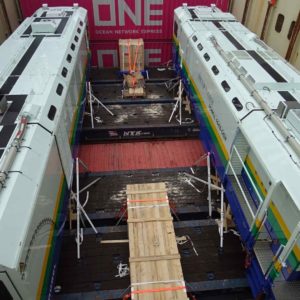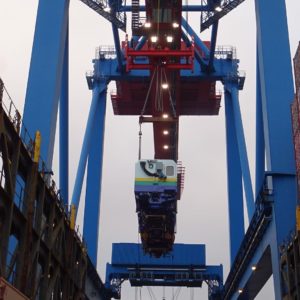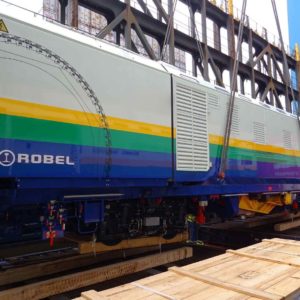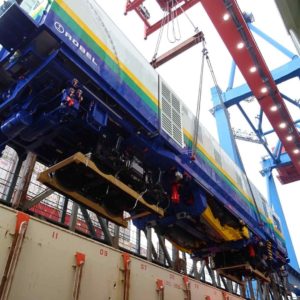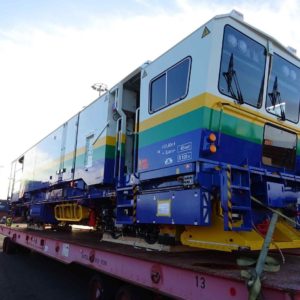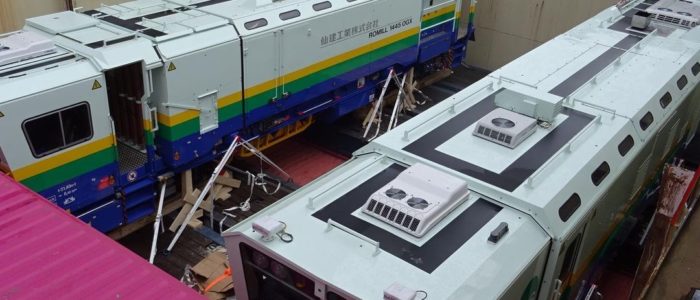
Transporting Railcars And Railroad Tampers By Sea
Railcars and railroad construction cars are shipped internationally on several types of ships such as breakbulk carriers, RO/RO carriers and containerships. Breakbulk ships lift the railcars from the pier into the hold with ship’s onboard gear. RO/RO carriers load the equipment on rolling mafi platforms that get towed into the hold via the ships massive ramp. Containerships utilize flat rack containers which are containers with no sides and no roof, designed to carry oversized equipment. The loaded flat racks are lifted on board ships with dockside gantry cranes. Lifting and securing these heavy units is planned with the use of engineering drawings that take into account center of gravity, lifting angles and lashing points. The upcoming Texas and California high speed rail projects will involve these types of shipments.
(Photo credit: ocean_network_express via Instagram: “Special cargo shipment from Europe to Japan”)
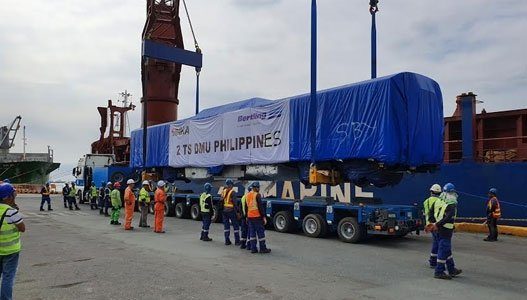
Journey of a Typical Railcar from Factory Through Locomotion in Another Country
The international journey of new railcars from factory through installation on a track overseas, is not as simple as booking trailers, a ship and cranes.
It starts with engineering modifications to the railcars to create lifting beams and lashing rings. COG calculations are made to ensure the lifting plan keeps the railcar balanced through the lifting operation. At the same time, early shipments are dispatched with tracks, welding equipment and materials, communication and signal systems, depot structures and fixtures as well as track maintenance equipment.
A local crew starts installing the tracks and associated equipment at destination while the railcars are being built and custom fitted with lifting and lashing points for the journey.
This complex process is designed and managed by specialists like Overseas Brokers, with the help of marine engineers who assist in creating lifting diagrams noting center of gravity, drafting of required crane spreader specifications, making angle and clearance calculations, as well as oversight by marine insurance surveyors who supervise every step of the loading/unloading, lashing, lifting, delivery and placement on the final track at destination.
Note: The lifting configuration of the railcar in the photo is designed to maintain a 90 degree angle and keep the railcar level when lifted, to prevent the lifting cables from causing damage to the side panels of the railcar.
Read more about such projects at:
(Photo Credit – above: Via The STAT Trade Times: “This shipment is the first delivery of PNR trains and seven more new trainsets are set to arrive in 2020.”)
https://www.topgear.com.ph/news/motoring-news/pnr-indonesia-train-coaches-a4354-20191211
(Photo credit: DOTR – via TopGear)
